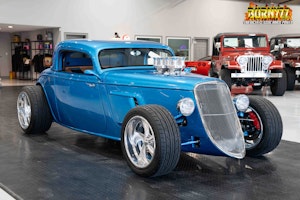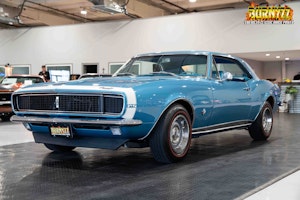Media | Articles
How a Group of Pajero Evo Fans Brought Unobtanium Brake Rotors Back into Production
When I imported the car of my dreams, a Mitsubishi Pajero Evolution, I knew from the jump that finding parts might present something of a problem. A homologation special, a true rally car for public roads, it was initially sold only in limited numbers to the Japanese domestic market (JDM), and only recently did it become eligible here in the United States under the 25-year exemption. All signs pointed to potential struggles.
But I consoled myself with the knowledge that surely the PajEvo, as fans call it, must share plenty of parts with the standard Pajero SUV, known as the Montero here in the U.S. And before I took the leap of faith into a PajEvo, I already knew all about Monteros, having put about 35,000 miles on a 1998 four-door since 2021.
In the end, the path from a beater “Gen 2.5” Montero that now shows 254,000 miles on the clock, to fantasy status PajEvo ownership, wound up being much easier than expected. The story begins when a friend name Joe Gatt first approached me, after spotting my Mitsubishi racing division Ralliart jacket as I stood next to my Montero at a local cars and coffee in LA.

“You’ll never guess what I just bought,” Gatt said, a bit breathless. Okay, I figured, another Lancer Evo, whoop-de-doo. But nope, Gatt had gone whole-hog the month prior and bought a Pajero Evolution at auction in Japan. He expected to pick it up at San Pedro about a month later. And that’s how I wound up at a customs booth with him outside the port, sweating everything from battery charge to fuel age, timing belts, and brakes. Gatt got lucky, though, and his PajEvo rolled right out of the yard and straight home, no problem (well, there was one problem, but more on that in a bit …).
Buying a car through the Japanese national auction system requires knowledge, access, and a fair amount of patience. But Gatt introduced me to Rami Fetyani of Inbound Motorsports, who walked me through the entire process. We bid on a few trucks, me always trying to lowball and get lucky with a ceiling of $30,000 all-in, including Rami’s fees and shipping costs. He watched with a wry chuckle every time I missed the winning bid by a few hundred bucks, but never resorted to high-pressure sales techniques to spark more out of my wallet. Eventually, lightning struck and Rami let me know a 1998 Pajero Evolution with a nerve-racking 236,000 kilometers (147,000 miles) on the odometer was headed my way.
Marketplace
Buy and sell classics with confidence
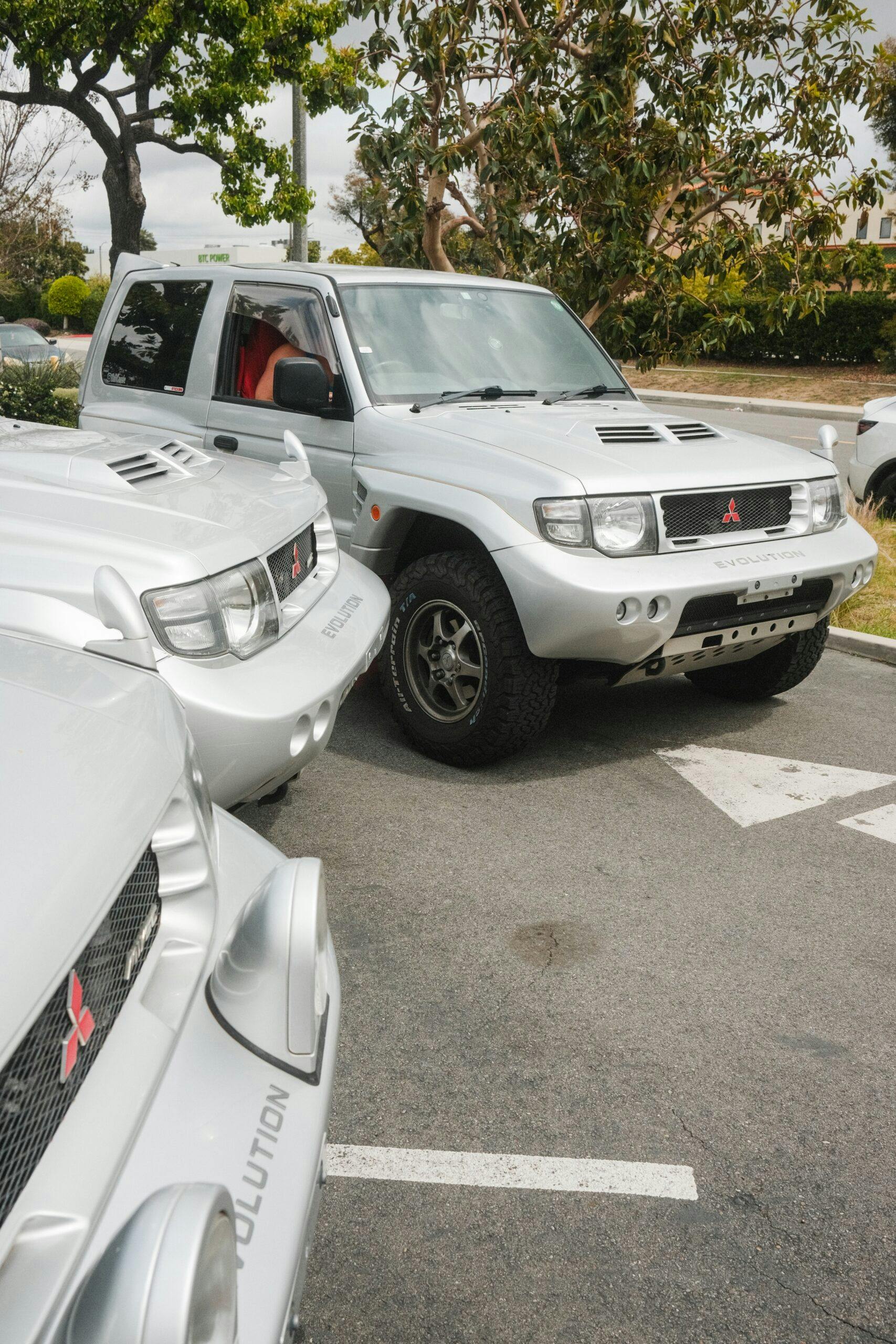
With some experience under my belt helping Gatt, as we anxiously counted down the months waiting for my truck to arrive, I got a primer on searching for rare parts for his using Mitsubishi’s EPC (electronic parts catalog), as well as foreign websites including Amayama, Nengun Performance, and Partsouq. Through this process, we also started communicating with a handful of other PajEvo owners on social media—and I even found scans of the original FIA homologation documents for the Pajero Evolutions that raced in the Paris-Dakar Rally.
There’s little in the way of verifiable information available on these rare Mitsus, either the racers or the road cars. Critical details like the actual years of production even vary, so much so that I probably got a bit of a steal on my PajEvo, because American bidders likely looked at the date on the title, 1998, and thought it wasn’t eligible for import for another year—but the 25-year rule applies to date of production, which was in 1997, so I bought and imported the truck legally in 2022.

Eventually, Gatt found that problem with his PajEvo: His brake rotors were starting to look pretty ragged, with a serious lip on the fronts and rears. We scoured the web, comparing the FIA doc and our measurements of his rotors with specs for other Pajeros, Monteros, Montero Sports, Shoguns of all generations, and even Delicas and Fusos—anything and everything that might match. There was a theory that Brembo contributed the braking system for the PajEvo, but again, no concrete evidence one way or the other seems to exist.

The 290-millimeter front and 315-millimeter rear diameters appeared backward, somehow matching a mix of Gen 3 and Gen2/2.5 Monteros, respectively. The pads looked the same as anything available on Rock Auto. But we tested a set of Gen 3 fronts and Gen 2/2.5 rears and discovered the top hat depth—from the hub to the caliper—didn’t match. The center bores on the Evo are also smaller, thanks to the independent suspension’s unique wheel hubs, rather than the solid rear axles of the standard trucks.
A savior appeared to arrive through the ether from Europe, where a guy claimed to have a set of OEM rotors available for sale. Heavy and almost prohibitively expensive to ship, yes—but these might be the only ones available in the world, so Gatt sprung for them, high price tag and all. Then they arrived, and hope turned to dismay when we opened the box to discover totally rusted, clearly used rotors. I pulled out a measurement caliper and, even worse, we discovered the rears were below minimum thickness.

This total rip-off sent us back to the drawing board. And, more accurately, back to Rock Auto’s hilariously outdated and beloved parts catalog. I compiled a spreadsheet of every brake dimension possible, but none seemed to work. Strategizing via text message and Instagram group threads, as well as on Facebook where I know some true wizards in the Montero community, the prospect of either contacting Brembo Europe or finding a small custom manufacturer here in the United States looked like our only remaining options.
Meanwhile, my PajEvo finally arrived. Gatt joined me at the port, and although his delivery had gone smoothly, I got some drama immediately in the form of a dead battery, old gas, and a bone-dry transmission pan. My rusty Japanese also came in quite handy, when I realized that the timing belt sticker, which listed the year as “22,” actually meant the job had been done in the 22nd year of the previous emperor’s reign—not in 2022, as I hoped. That emperor, Akihito, reigned from 1989 to 2019, which meant the timing belt and water pump had last been done in 2010.
Sourcing all the parts to do a timing belt and water pump job on a rare homologation car’s almost irreplaceable double-overhead-cam Mivec engine took months. The funky brake rotor seller in Europe also offered a full kit, but I couldn’t trust him after Gatt’s experience. As the parts slowly trickled in from Japan and Dubai, I learned exactly where Mitsubishi’s EPC fails. Many parts exactly matched the components on a double-overhed-cam Gen 2 Montero, but with different part numbers for no reason whatsoever. (This carries over throughout the trucks, for example on the lower front ball joints, which match perfectly despite different part numbers.)
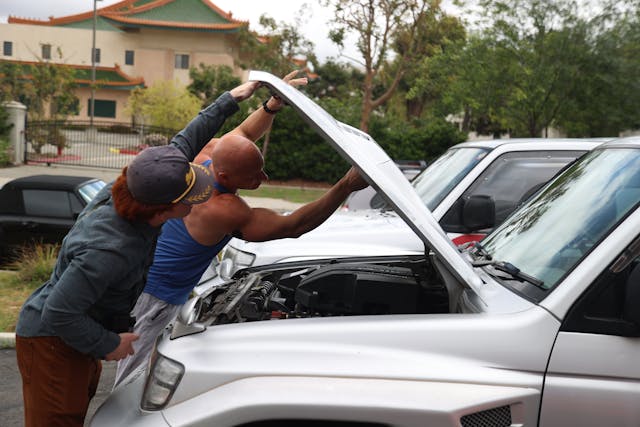
I paid a local Montero shop, Ozzy’s Automotive, to do the timing belt job and inspect my PajEvo from top to bottom, just to establish a baseline. Luckily, Ozzy found zero rust or evidence of damage, but while digging into the engine, he noticed a fragment of the crankshaft pulley had sheared off and also some slight seeping from the valve cover gasket. The former he replaced, the latter is still on my own to-do list.
My rear brake pads also looked pretty low, even though my rotors were good for at least another go-round. But Gatt had started to feel the pinch, as he daily drove his PajEvo despite running both front and rear rotors down to the quick. He’s a known figure in the Los Angeles car community, though, and alongside the PajEvo, owns a fifth-gen Escort Cosworth. He also previously tracked a GT500, which wound up leading to a conversation with Corey Qin of FSE LA, a specialist shop that supports customers who race supercars including Ferraris and McLarens.

“At first I wasn’t interested, because I didn’t think it was possible that he can’t find a brake rotor,” Qin told me, recalling Gatt’s misfortunes. Then he took it upon himself to search, figuring it couldn’t be that hard. “Oh, it is impossible,” he said. “So how come there’s no one making the rotors for this car? Why did they only make 2500? No wonder Mitsubishi’s going downward …”
Gatt proved quite persuasive, pulling together a group of fellow owners—myself included—who needed or wanted brake rotors. Because even if half of the original 2693 (or so) Pajero Evos survive today, everybody still needs brakes, right? And Qin, who races McLarens but also skis at Mammoth nearly every weekend of the winter, felt his competitive spirit coming through, even though he knew that producing a limited run of rotors for a rare homologation special lacked the potential for significant return on investment.

Qin’s connections to AP Racing’s sole Asian distributor, and his experience producing iron rotors to replace the stratospherically expensive carbon-ceramics on McLarens for track days, gave him the confidence to produce a limited run of just 100 rotor sets, far fewer than most automotive parts manufacturers might ever consider. “We’re science students. We were just enjoying the technical aspects of making the product,” Qin said. “It seems like a small challenge … a good example that we can go from the beginning to the end product.”
First, though, we needed to figure out the true specs. Another Montero pal, Owen LeCours, owned what we believed to be the very last set of NOS rotors extant, purchased from a site called Amayama in Japan. But it turned out to be easier for Gatt to just bring his truck to FSE’s Irvine shop for measurement. FSE 3D-scanned the rotors, then added a few millimeters of thickness to compensate for wear.
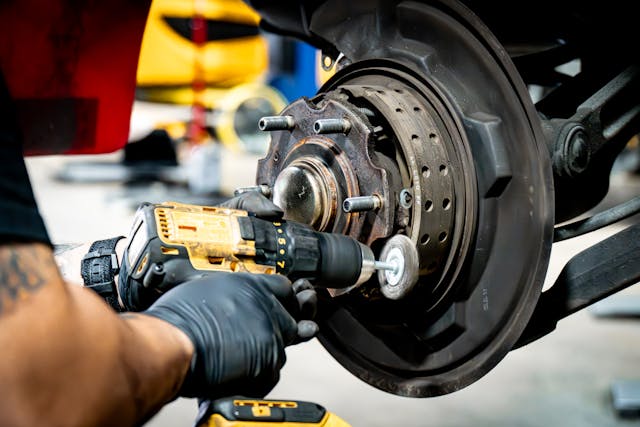
I supported the project by providing the best brake pads I had found thus far—fronts from Brembo, rears from Hella/Pagid. Soon Gatt asked me to help draft a description for FSE’s website so we could start a presale, and just a couple of weeks later he sent me a few pics of the first set of prototype rotors, now mounted on his truck to test fit.
And they fit perfectly. This was no stroke of luck, though. According to Qin, the modern era of 3D scanning and printing streamlines prototyping processes significantly. “We scan a lot of exotic cars to make body kits,” he said when I pointed out how well the first batch came out. “We didn’t even think this wouldn’t work. There’s no point. This works.”
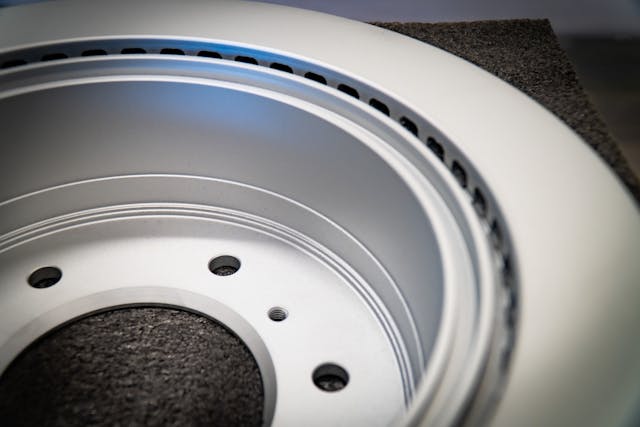
Best of all, Gatt described the braking as significantly improved—and not just because he’d swapped out aging, thin rotors from an unknown brand. FSE constructed them with the same metal composition used for race cars in the Chinese Touring Car Championship, rather than taking a sample of Gatt’s original brakes and replicating the iron.
“The car is 30 years old, but we used the newest technology today,” Qin said. “Then there’s the Geomet coatings available. So basically new tech for the old car. I think it’s a cool concept.”
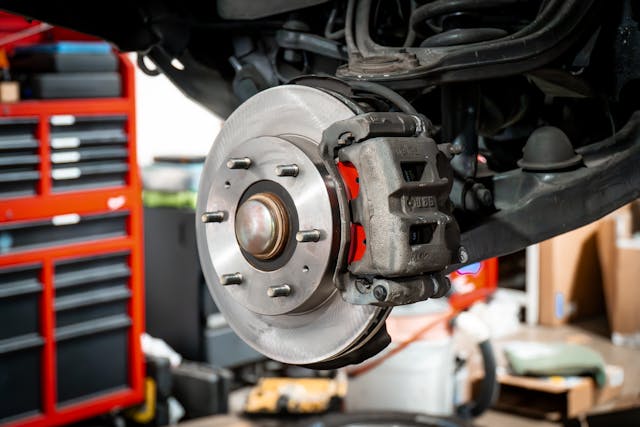
A couple of months later, in January of this year, Gatt told me the production run of 100 rotor sets had been held up at the port. President Trump’s inauguration and early tariff talk had thrown the project for one last loop, and FSE faced the prospect of significant, potentially unknown taxes on the rotors, which were manufactured in China. They were in the U.S., at least, so the question was whether to pass along a price hike to PajEvo owners or bite the bullet. We’d pulled together just shy of 30 preorders already, and Qin recognized the situation realistically.
“For the operating costs, I think we’re gonna break even,” he admitted. “But it’s a very good experience. We already have a successful operation here, so this is like our first step into mass-production rotors. Before, we made a lot of custom stuff.”

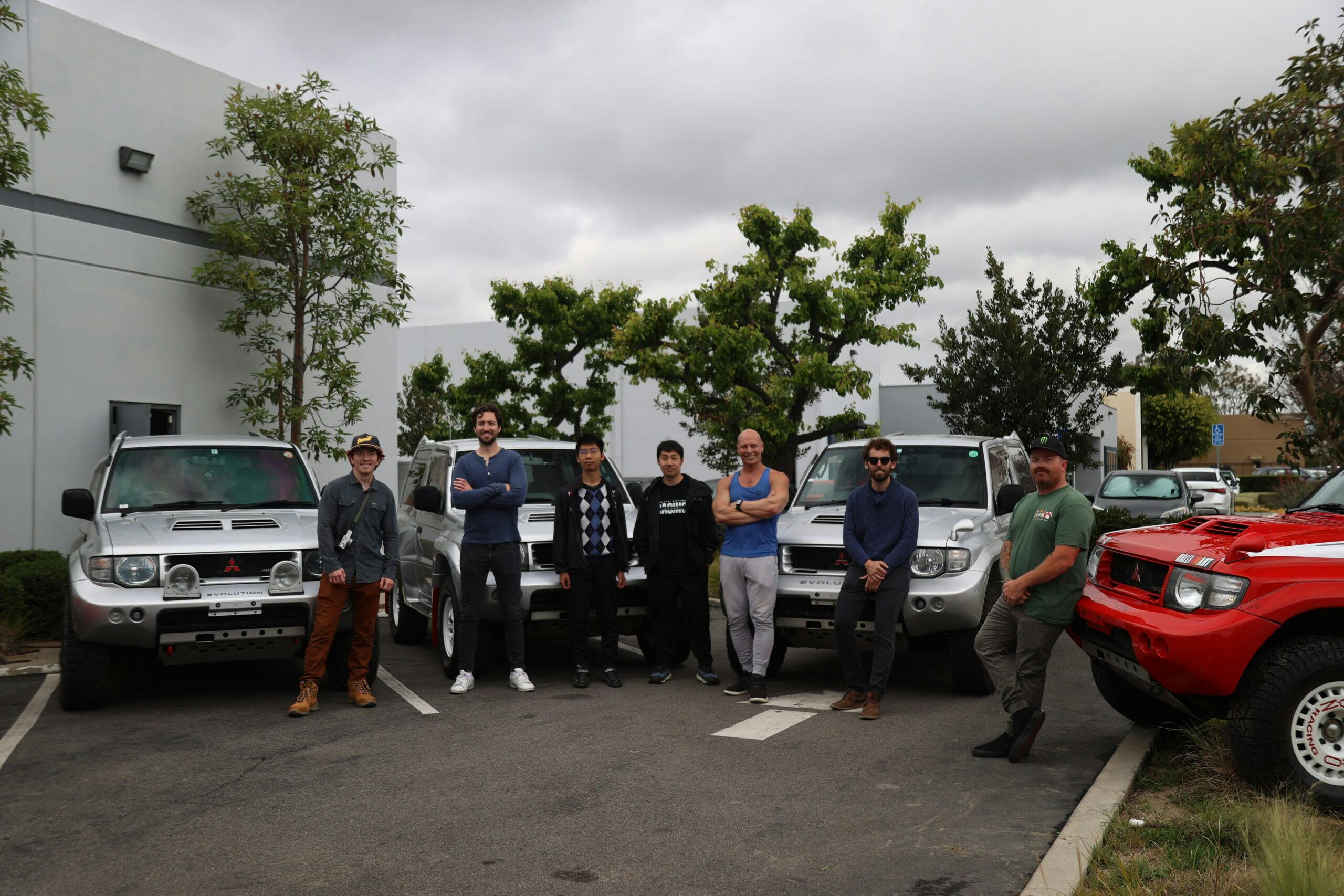
A few more weeks passed, and customs released the pallets to FSE. Gatt and I arranged for a group of five PajEvo owners to visit the shop together, pick up our preorders, and meet the team who brought this vision to life. In person, the new Geomet coating almost makes the rotors look 3D printed, but it’s an important finishing element to prevent the top hats, especially, from rusting—as on Gatt’s prototypes. In total, the entire process took FSE about six months; but only three months of truly taking the project seriously, including one month of shipping and three weeks stuck in the port.
One of the biggest challenges, Qin admits, was figuring out the packing materials and shipping logistics. FSE’s typical one-off jobs require less consideration, but again, he believes this will be good practice for future endeavors, some of which are already in motion: FSE plans to take what it has learned from this batch into its next project—one-off sets of continuous-thread carbon-ceramics for track use, starting with McLaren applications at a fraction of the OEM price.
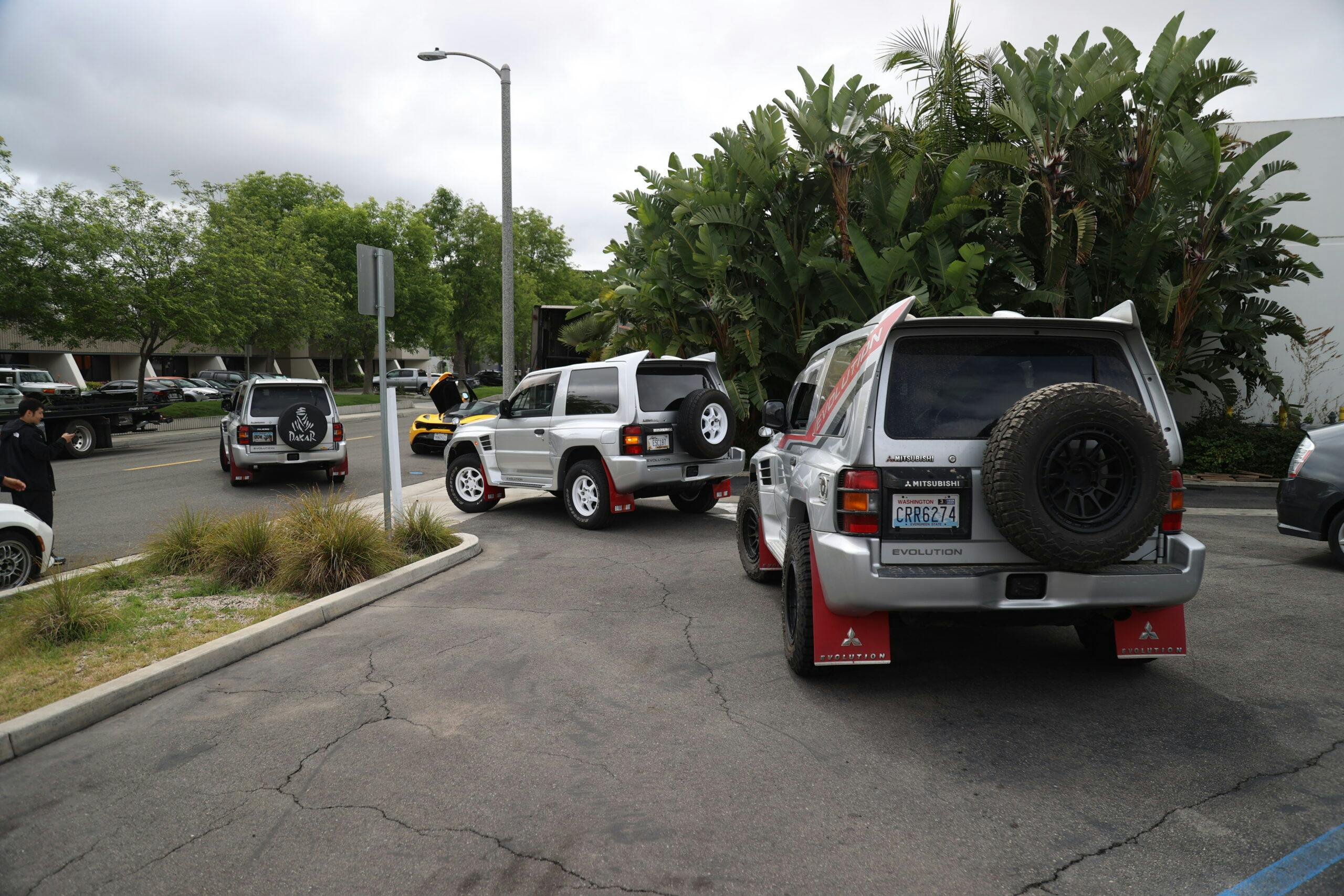
At $999 for PajEvo preorders and now $1095 fully priced (or $1185 including pads), the new rotors are not cheap. But after I installed a set on my truck, which I drive harder than hard both on-road and off, as befitting a rally racer, the performance increase blew my mind. Initial bite of the brakes improves just a little, but through more of the pedal stroke, these rotors provide far more progressive stopping power. The same sentiment holds true in messages flying back and forth in our Instagram thread and Facebook groups revealing similar impressions from other owners.
It’s unclear whether FSE can get out of the red on this run of production rotors. That’s certainly the hope of our small group of PajEvo owners, both as a thanks for the lifeline but also because we have ideas for future projects. We’re already brainstorming what’s next. On my list, I want to figure out bushings for the Evo’s unique rear control arms.
At least for now, we’ve got one major problem solved. Brakes just slow you down, as the saying goes. But they’re also pretty important for keeping—in my entirely unbiased opinion—one of the greatest cars of all time on the road.



